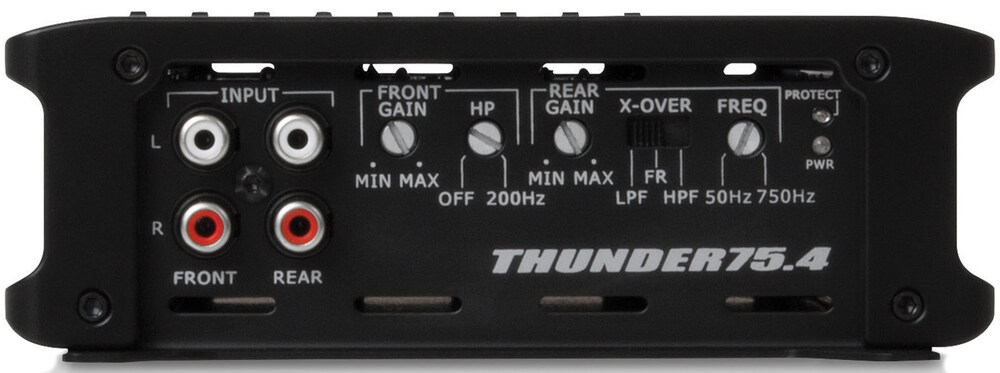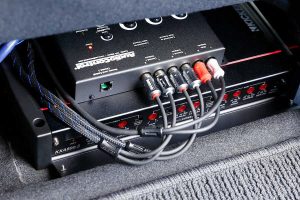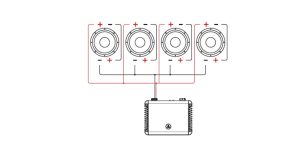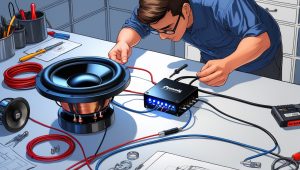How to Set Frequency on Amp? Setting the frequency on your car amplifier is an essential step in achieving optimal sound quality and performance from your audio system. As a car audio enthusiast and user of car amplifiers, I understand the importance of fine-tuning frequency settings to create the perfect listening experience on the road.
Contents
Understanding the Importance of Frequency Settings:
Before delving into the specifics of how to set frequency on your amp, it’s crucial to grasp the basics of amplifier frequency and why it matters. In simple terms, frequency refers to the range of audio signals that your amplifier can reproduce. The frequency settings on your amp determine which frequencies are sent to your speakers, affecting the overall sound output.
Why do frequency settings matter? Well, imagine your favorite song playing through your car speakers. If the frequency settings are not properly configured, certain parts of the music may sound muffled or distorted, while others may be overly emphasized. By adjusting the frequency settings, you can tailor the sound to your preferences and ensure that each note is reproduced with clarity and accuracy.
My Experience
As a car audio enthusiast and avid user of car amplifiers, I’ve had my fair share of experiences with setting frequency on amps. Over the years, I’ve learned the importance of fine-tuning frequency settings to achieve the perfect sound quality in my vehicle. From experimenting with different crossover points to adjusting filter slopes, each step has been a journey towards audio perfection. In this section, I’ll share some of my personal insights and lessons learned from setting frequency on amps, offering valuable tips and advice based on my own experiences.
Getting to Know Your Car Amplifier
Before you can begin adjusting the frequency settings on your amplifier, it’s essential to familiarize yourself with the device itself. Car amplifiers come in various types and models, each with its own set of controls and features. Whether you’re working with a mono, 2-channel, or multi-channel amplifier, understanding how to navigate its controls is key to achieving optimal performance.

Take a moment to locate the frequency adjustment controls on your amplifier. These controls may include high-pass and low-pass filters, crossover points, and gain adjustments. Familiarize yourself with each control and its function before proceeding to the next step.
Step-by-Step Guide to Setting Frequency on Your Amp
Now that you’re familiar with your amplifier’s controls, let’s dive into the process of setting the frequency. Follow these steps to ensure that your amplifier is configured to deliver the best possible sound quality:
- Preparing Your Amplifier and Sound System: Before making any adjustments, ensure that your amplifier and sound system are properly installed and functioning correctly. Check all connections to ensure they are secure and free from interference.
- Locating Frequency Adjustment Controls: Identify the frequency adjustment controls on your amplifier. These controls may be labeled as “LPF” (low-pass filter) and “HPF” (high-pass filter), among others. Refer to your amplifier’s manual for specific guidance on locating these controls.
- Adjusting High-Pass and Low-Pass Filters: High-pass and low-pass filters are used to specify the range of frequencies that are allowed to pass through to your speakers. High-pass filters allow higher frequencies to pass, while low-pass filters allow lower frequencies to pass. Adjust these filters according to your preferences and the capabilities of your speakers.
- Fine-Tuning Frequency Settings: Once you’ve set the high-pass and low-pass filters, fine-tune the frequency settings to achieve the desired sound quality. Experiment with different crossover points and filter slopes to find the optimal balance between bass, midrange, and treble frequencies.
- Testing and Adjusting as Needed: After making adjustments, test your audio system to evaluate the impact of the frequency settings. Listen for any distortions, imbalances, or inconsistencies in the sound output. If necessary, go back and make further adjustments until you are satisfied with the results.
Tips and Tricks for Optimizing Frequency Settings
Setting the frequency on your amp is as much an art as it is a science. Here are some additional tips to help you optimize your frequency settings and enhance your listening experience:
- Understanding Your Music Preferences: Consider the type of music you typically listen to and adjust the frequency settings accordingly. Different music genres may benefit from different frequency distributions, so don’t be afraid to experiment until you find the perfect balance.
- Experimenting with Different Settings: Don’t be afraid to experiment with different frequency settings to find the optimal configuration for your audio system. What works for one listener may not necessarily work for another, so don’t hesitate to try out different combinations until you find what sounds best to you.
- Considering External Factors: Keep in mind that external factors, such as road noise and cabin acoustics, can impact the sound quality in your car. Adjust your frequency settings accordingly to compensate for these factors and achieve the best possible sound reproduction.
- Seeking Professional Assistance if Necessary: If you’re unsure about how to set the frequency on your amp or if you’re not getting the desired results, don’t hesitate to seek professional assistance. Car audio professionals can provide expert guidance and assistance to help you optimize your audio system for maximum performance.
Common Mistakes to Avoid
While setting the frequency on your amp may seem straightforward, there are some common mistakes that you’ll want to avoid:
- Overlooking the Importance of Frequency Settings: Some car audio enthusiasts overlook the importance of frequency settings and assume that default settings will suffice. However, properly configuring the frequency settings is essential for achieving optimal sound quality and performance.
- Incorrectly Adjusting Filters: Adjusting the high-pass and low-pass filters incorrectly can lead to imbalanced sound output and distortion. Take the time to understand how these filters work and adjust them carefully to avoid these issues.
- Disregarding Testing and Tuning: Testing and tuning your audio system is crucial for ensuring that the frequency settings are properly configured. Don’t skip this step, as it can make a significant difference in the overall sound quality of your car audio system.
Conclusion
In conclusion, How to Set Frequency on Amp? setting the frequency on your car amplifier is a critical step in achieving optimal sound quality and performance. By following the steps outlined in this guide and experimenting with different settings, you can customize your audio system to suit your preferences and enjoy a premium listening experience on the road. Remember to consider external factors, seek professional assistance if needed, and avoid common mistakes to ensure that your audio system delivers the best possible sound quality. Happy listening!






